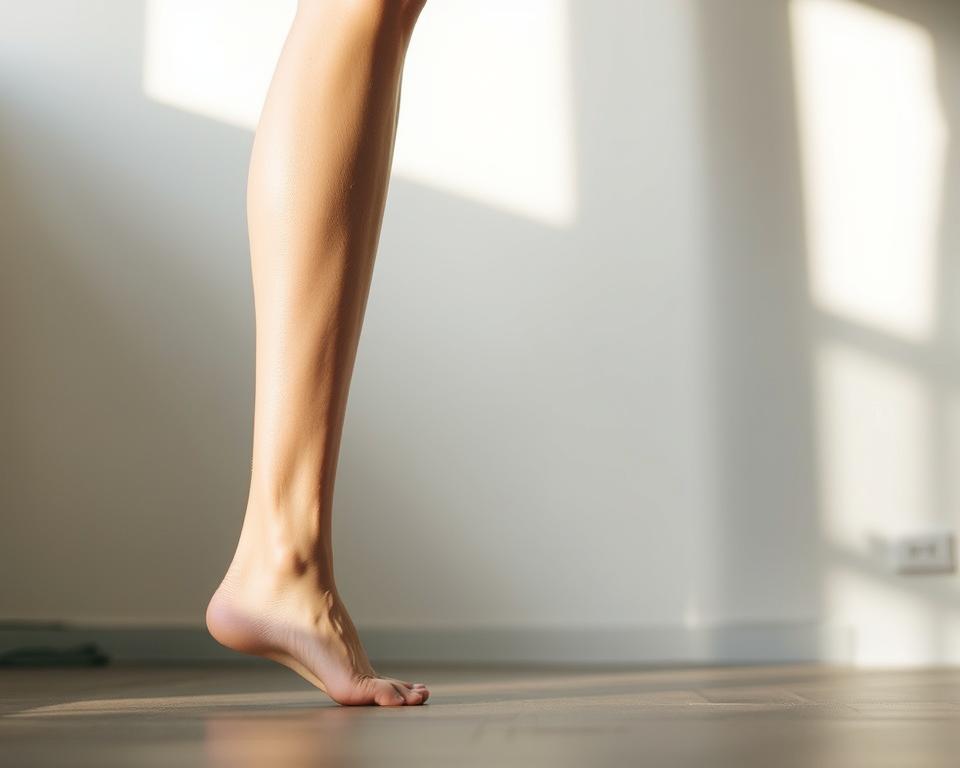Anúncios
Balance is the skill your body uses to keep you upright and steady through daily life.
You will learn clear tips that link your center of gravity—near the belly button at rest—to the base of support under your feet. Small shifts in gravity and foot placement change stability. A cane, for example, widens your base and adds support.
Your eyes, inner ear, skin, and joints send information that guides movement and posture. For tiny sways your ankles correct, larger ones use the hips, and if needed a step expands the base to regain control. Five common motor responses—ankle, hip, stepping, weight-shift, and suspension—work together depending on surface, direction, and awareness.
This guide connects rehab ideas to real life: short microbreaks, posture resets, and gentle drills you can try safely. Use a counter or chair for support, avoid cluttered spaces, and consult a licensed clinician when you notice frequent stumbles or dizziness.
Context: Why balance matters for your body, your schedule, and your screen time
How you use your day and your devices matters as much as how you stand when it comes to staying steady. In simple terms, balance means keeping your center of mass over your base so you can move without falling.
Anúncios
What “balance” means today
You manage physical posture, your calendar, and screen habits all at once. Juggling meetings and long stretches of scrolling changes how your attention and posture behave. Short vision breaks and batched notifications help protect your focus and lower sudden head turns that can shift your center gravity.
How your body keeps you upright
Your eyes provide visual cues about where you are in space. Your inner ear senses head motion and gravity. Sensors in your skin, muscles, and joints send the rest of the information that the body uses to choose a corrective strategy.
- Center gravity sits near your navel and shifts with movement.
- The base support is the area under your feet; widen it to increase stability.
- Pushing past your limits of stability — like reaching while distracted — raises the risk of a stumble.
Treat these tips as practical guidance and consult a licensed clinician if you notice dizziness, ear symptoms, or repeated stumbles.
Balance strategies explained
Every time you wobble, your body runs a short program to get you back over your feet. Below are five clear responses, when they kick in, which muscles help, and how to try them safely at home.

Ankle strategy: your first line of defense for small shifts
The ankle response handles tiny forward and backward sways. Calves lead a forward correction; shins start a backward one. Think of it like fine-tuning a ship’s rudder—small moves at the point closest to the water.
Hip strategy: redirecting your trunk when sway grows
When sway nears your limits, the trunk shifts over the hips. Abdominals and paraspinals engage to pull the center back over the base support. Try gentle hip hinges near a counter to feel the pattern safely.
Stepping strategy: expand your base to prevent falls
If the center gravity goes past the safe point, you step to widen the base. This stepping strategy is reflexive—like catching yourself when someone bumps you. Practice small in-place steps in a clear space.
Weight-shift and suspension: side control and lowering the center
Weight-shift moves load from one leg to the other using hip abductors. Suspension briefly lowers the center by flexing hips, knees, and ankles to absorb force. Both help you ride out unexpected directions without overreaching.
Tip: Start slowly, hold a stable surface, and build familiarity rather than force. Muscle coordination improves with brief, regular practice and mindful attention to your center gravity.
How to practice safely and apply balance to work, life, and play
You can train small reactions — like ankle corrections and quick steps — with safe, everyday drills. Start near a sturdy counter or chair and keep shoes on for clear foot feedback.
Quick home drills that target ankles, hips, and stepping with real-world examples
Begin with ankle work at the kitchen counter: feet hip-width on firm ground, gentle forward and backward sways for 30–45 seconds.
Do side side sways next, then close your eyes only when steady. Add hip-control hinges with soft knees and hands on hips to practice trunk shifts.
In a clear hallway, rehearse taking a small, controlled step forward and backward, then a quick lateral take step. Use short steps and pause if you feel off.
Desk and phone habits: short posture resets and vision breaks
Every 20 minutes, look 20 feet away for 20 seconds, stand 30–60 seconds, and roll your ankles. Reset head-over-shoulders alignment to help maintain balance during long tasks.
Keep screens at eye level, feet flat, and alternate sitting and standing. For phone use, hold the device high and switch hands to avoid one-sided loading.
Gaming and digital play: controller and VR tips
For console play, plant feet shoulder-width and take short posture breaks each level. For VR, clear the play area, set guardian boundaries, manage cables, and face a wall or open carpeted space.
Know your risk and when to consult a clinician
Stop and seek help if you get new dizziness, ear fullness, repeated toe-catches, knee buckling, or near-falls. A licensed clinician can assess your risk and guide progression.
- Progress slowly: add time, reduce support, or try a softer surface one change at a time.
- Use your muscles as shock absorbers; small, calm responses are your first line of defense.
Conclusion
Important, small, repeated drills help your body manage shifts in gravity and stay steady at work and home. You now have clear information to fit brief practice into your day, from a one-minute ankle reset to a quick hip shift between meetings.
Mix one response drill with a digital habit, like a 20-20-20 eye break plus a gentle sway. This keeps your center gravity over your support more often and trains the trunk, hips, and feet to share load during standing and movement.
If you notice new dizziness, frequent stumbles, or loss of strength, consider physical therapy. A clinician can assess which strategy your body favors and help reduce the risk of falls while you build steady habits.



